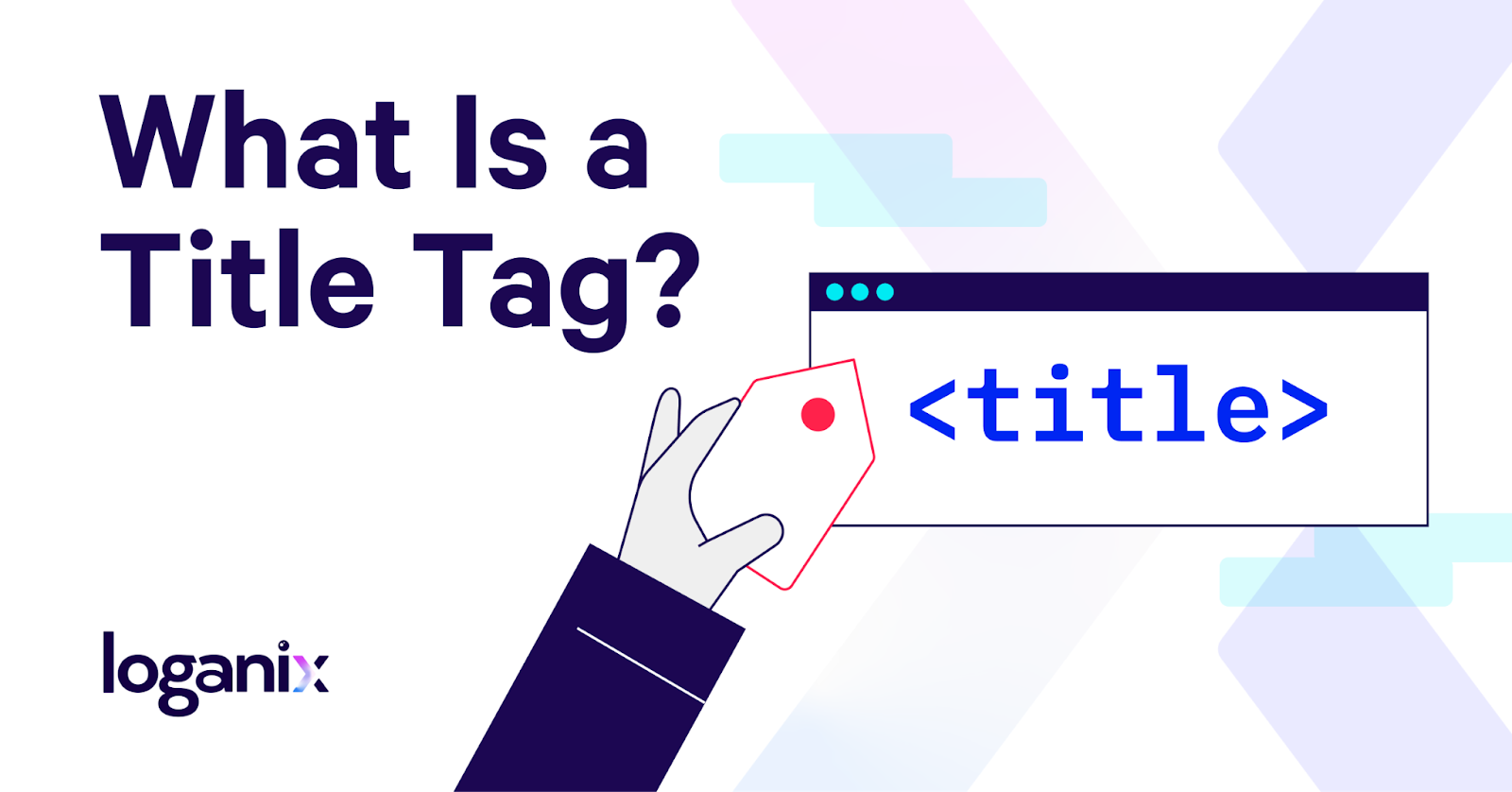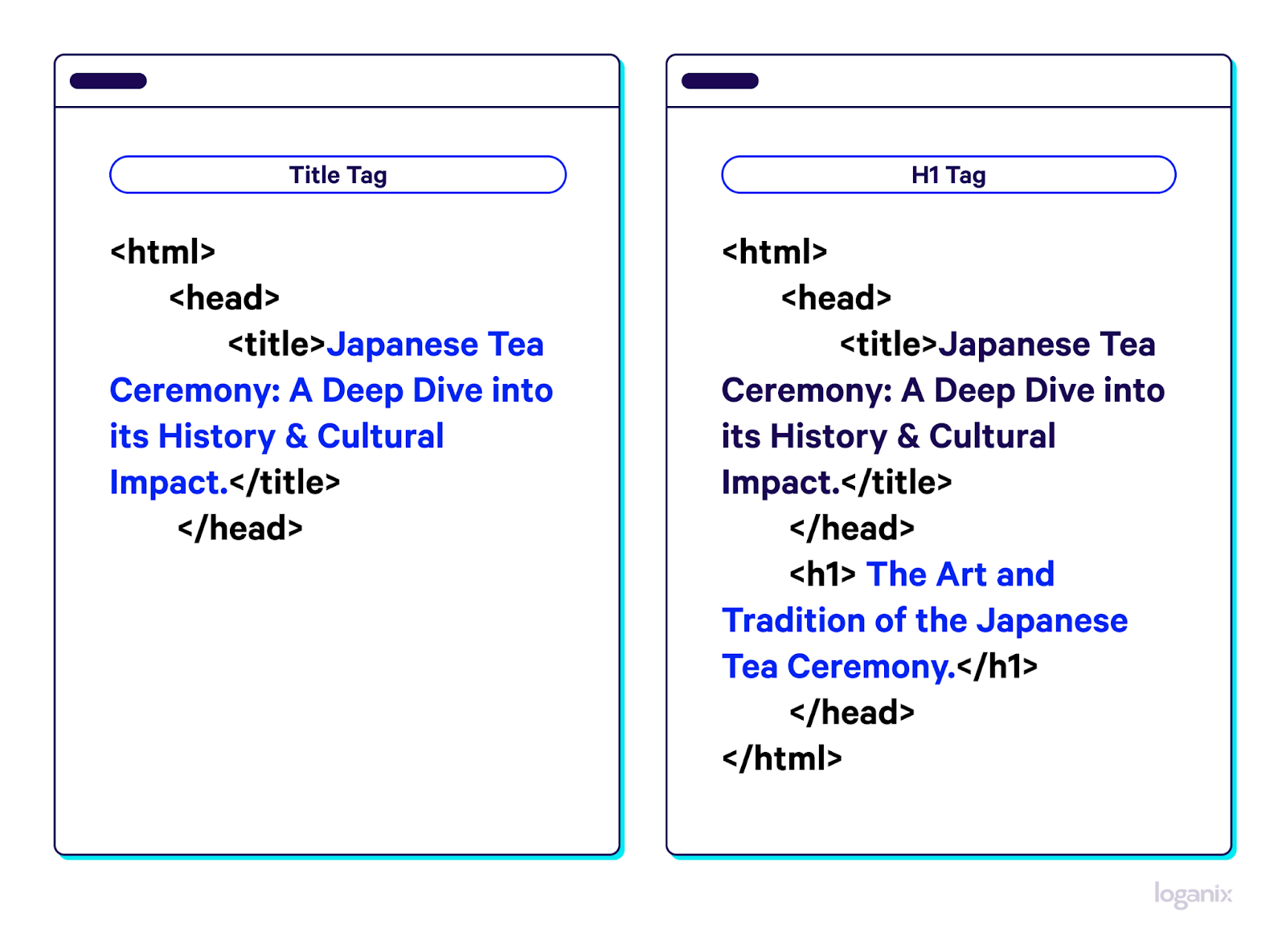What Is a Title Tag?

Hand off the toughest tasks in SEO, PPC, and content without compromising quality
Explore ServicesOften underestimated, in the world of search, the humble title tag carries significant weight. Why? Simple, really, first impressions—your title tags often serve as a potential visitor’s first introduction to your website.
Not to mention Google also considers title tags as a ranking factor.
To catch you up with everything title tags, in this guide, we
- answer the all-important question, “What is a title tag?”
- understand its crucial role in SEO,
- and explain why Google will sometimes use the title tags you’ve written yourself and why they sometimes generate their own.
What Is a Title Tag?
A title tag essentially acts as the headline of a web page. Behind the scenes, it’s an HTML element that lives in a website’s source code, summarizing a page’s content for both human readers and search engines. However, you’ll probably know title tags as the clickable, blue links displayed on search engine results pages (SERPs). They’re also shown in the tab of your browser when you have a webpage open.

As you can see from the image above, title tags look like this in HTML:
<title>December Marketing Ideas – Loganix</title>
When viewed in the context of a webpage’s HTML, it would look something like this:
<html>
<head>
<title>Your Title Tag Goes Here</title>
</head>
<body>
… Your webpage’s body content goes here …
</body>
</html>
Learn more: If you’re interested in further broadening your SEO knowledge, make sure to check out our SEO glossary, where we’ve explained over 250+ terms!
Why are Title Tags Important?
Now you know what a title tag is, let’s explore the importance of title tags from three different perspectives: SERPs, web browsers, and social networks.
Title Tags in SERPs
Your title tag serves as a headline in the SERPs, influencing the first impression of potential visitors. So, as you can imagine, a compelling and descriptive title tag can determine whether a potential site visitor engages with your carefully designed webpage or simply scrolls past it to land on a competitor’s site.
It’s your moment to shine. A time to communicate what your page offers and entice users to click. Consequently, a well-written title tag can improve your click-through rates and boost your website traffic.
Title Tags in Web Browsers
Ever had umpteen tabs open in your browser, struggling to find the one you need? Here’s where title tags come to the rescue. The title tag of your page is displayed on each browser tab, guiding users through the labyrinth of open pages. It improves navigation and enhances the overall user experience.
Title Tags on Social Networks
In this era of likes, shares, and tweets, your content’s reach extends beyond your website. When a page from your site is shared on social networks like Facebook, LinkedIn, or Twitter, the title tag dictates the title of the shared post. It becomes your ambassador, providing context to potential visitors and enticing them to click and visit your site.
Title Tag vs. H1 Tag: The Cousins of On-page SEO
In the world of on-page SEO, the title tag and H1 tag are often seen as close relatives, much like cousins. And while they have separate roles—oftentimes, but not always, they are written exactly the same—the title tag and H1 tag share a common goal: to accurately describe the page’s content. Their symbiotic relationship helps search engines understand your content and rank it appropriately.

But although they share a resemblance—both play vital roles in clarifying a page’s content—they each have distinct characteristics and duties.
Let’s find out why.
Title Tag
The title tag is the unseen maestro, orchestrating your webpage’s performance from behind the scenes. As we’ve discussed, it primarily operates outside your website, making its appearance in three main areas: the SERPs, the browser tab, and when the page is shared on social media.
Real-world example 👉 Imagine you have a webpage about the history and cultural significance of the Japanese tea ceremony.
The title tag (as seen in search results) might be: “Japanese Tea Ceremony: A Deep Dive into its History & Cultural Impact.”
H1 Tag
The H1 tag, on the other hand, is your webpage’s headlining act. It’s the main title that visitors see when they land on your page. Think of it as the title of a book chapter—it outlines what the content is about and helps readers (and search engines) understand what a web page is all about. In contrast to the title tag, the H1 tag is very much a part of your on-site content and typically doesn’t appear outside of your website.
Real-world example 👉 Touching back in with our tea ceremony example, let’s say when a visitor lands on the page, the main heading they see is the H1 tag, which reads: “The Art and Tradition of the Japanese Tea Ceremony.”
In this scenario, the title tag provides a comprehensive overview, hinting at a detailed exploration of the topic’s history and cultural significance. In contrast, the H1 tag emphasizes the artistic and traditional aspects of the tea ceremony, setting the tone for the content that follows. Of course, both the title tag and H1 tag could remain the same for simplicity. Ultimately, it’s up to you.
Why Won’t Google Use My Title Tag?
You’ve crafted a compelling title tag packed with relevant keywords and compelling language. Yet, in the search engine results, Google decided to show a different title, one they’ve generated themselves.
What gives?
This is a common concern among webmasters and SEO professionals. But before you throw your hands up in despair, it’s essential to understand why Google might decide to rewrite your meticulously crafted title tag.
According to Google’s own John Mueller, there’s no cause for alarm if the title displayed in the search results differs from your actual page title. In his words:
“It’s not a critical issue if the title that we show in the search results—we call these title links nowadays—doesn’t match what is on your page. From our point of view, that’s perfectly fine. And we use what you have on your page when it comes to search.”
There are a few reasons why Google might choose to rewrite your title tag:
- Keyword stuffing. If your title tag is overstuffed with keywords to the point of being unhelpful or spammy, but the content on the page is perceived as helpful, Google may simply choose to rewrite it. The aim is to provide a user-friendly and relevant title that genuinely represents the content of the page.
- Irrelevance or inaccuracy. If Google feels your title tag is irrelevant or inaccurate in relation to the content on your page, it might choose to rewrite it. Google’s primary goal is to serve users results that match their intent, and this includes accurate and useful titles.
- Length. If your title tag is excessively long (over 60-70 characters or 580 pixels), Google might shorten it to ensure it displays correctly in search results.
- Branding. Mueller also mentions that Google sometimes adds a company or brand name to title tags in the search results. This is done to give users a broader context of the page and its origins, which can enhance user experience.
John Mueller also underscores that title tags are used as a “tiny factor in our rankings.” So, while it’s crucial to optimize your title tags, it’s equally important to focus on creating high-quality, relevant content on your page. As he puts it:
“Essentially, your page is what we use as a basis for the rankings.”
So, don’t panic if Google rewrites your title tag. Instead, focus on creating descriptive, user-friendly, and length-appropriate title tags while ensuring the content on your page matches the promise made in the title. This will enhance user experience and contribute positively to your overall SEO efforts.
Learn more: how to test and optimize your title tags.
Conclusion
Let’s be honest—crafting the perfect title tag while juggling the countless other aspects of SEO can be daunting. That’s where Loganix comes in. We’re experts in the SEO field, and we’re here to guide you on your SEO journey, from creating effective title tags to managing comprehensive, multifaceted SEO campaigns.
With our SEO services, you can ensure your website stands out from the crowd, beckoning users and search engines alike with an enticing title tag and a content-packed site.
🚀 Discover our suite of SEO services and start making your mark today! 🚀
Hand off the toughest tasks in SEO, PPC, and content without compromising quality
Explore ServicesWritten by Aaron Haynes on October 16, 2023
CEO and partner at Loganix, I believe in taking what you do best and sharing it with the world in the most transparent and powerful way possible. If I am not running the business, I am neck deep in client SEO.





